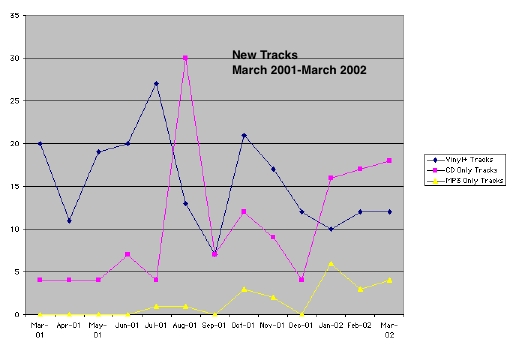| several different keys, and with alternative arrangements (for example, the same song can be released with and without a vocal background). CDs would be expensive if the producers were using commerical CD pressing plants. However, for square dancing, the quantities are small enough that producers seem to be using regular CD-R burners, thus keeping the cost low. MP3s: MP3 files are compressed sound files. Some information is lost during the compression, but in general, only sounds that are inaudible to humans are discarded. High quality MP3s are considered to be “near-CD” quality. MP3s are available only if you have acces to a computer and an internet | |||||||||||||
| By Kris Jensen On both the February and March Hanhurst tapes, 14 of the selections were available as CDs or MP3s only. If you’re only using 45 rpm vinyl, it’s time to start thinking about your digital future. There are three aspects: your music source (how you get your square dance music: vinyl, CD, MP3, or even MIDI), your music output (how you play your music at a dance) and any processing that you want to do, including transforming music from your source to your output | medium. Sources Music released specifically for square dancing: Vinyl (45 rpm records): Most square dance music is still being released on vinyl. However, the cost is high and the return is low, so producers are looking at alternatives. CDs: This is my favorite music source. I get uncompressed sound files, often in | |||||||||||||
 | ||||||||||||||
| Vinyl+ includes new releases on vinyl-only, vinyl and MP3, vinyl and CD, or all three. It does not include “golden oldies” where both MP3 and vinyl are available. Tracks means distinct tunes. For example, a two-sided patter record counts as two tracks; a CD with one tune in multiple keys or with and without vocal backgrounds counts as one track. | ||||||||||||||